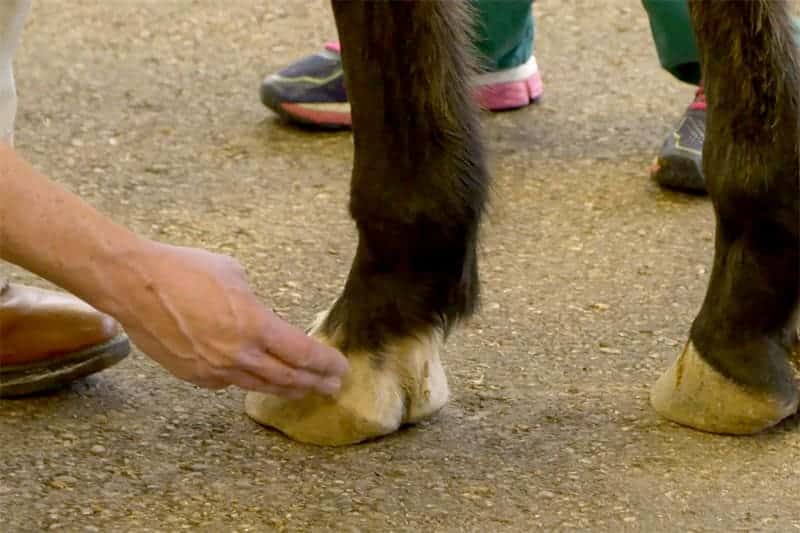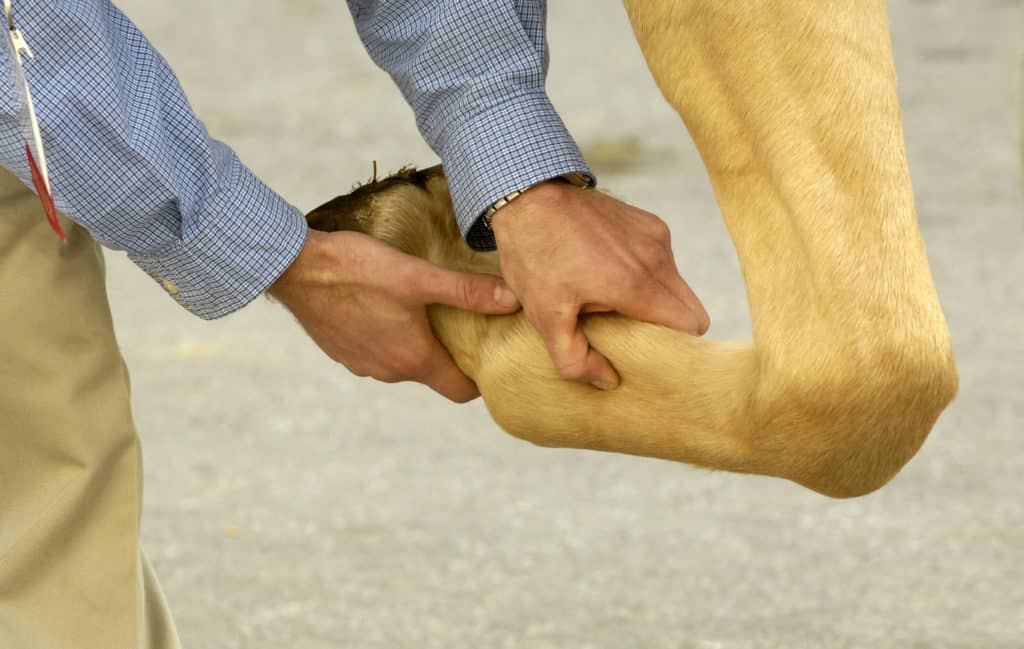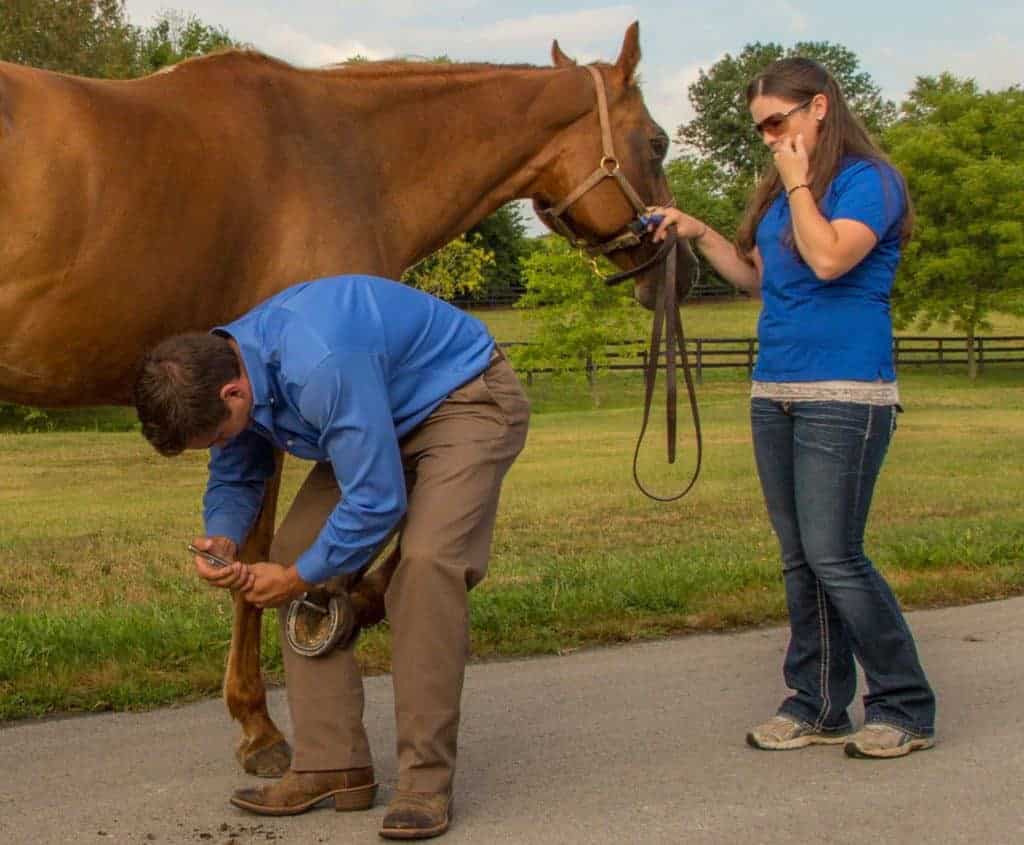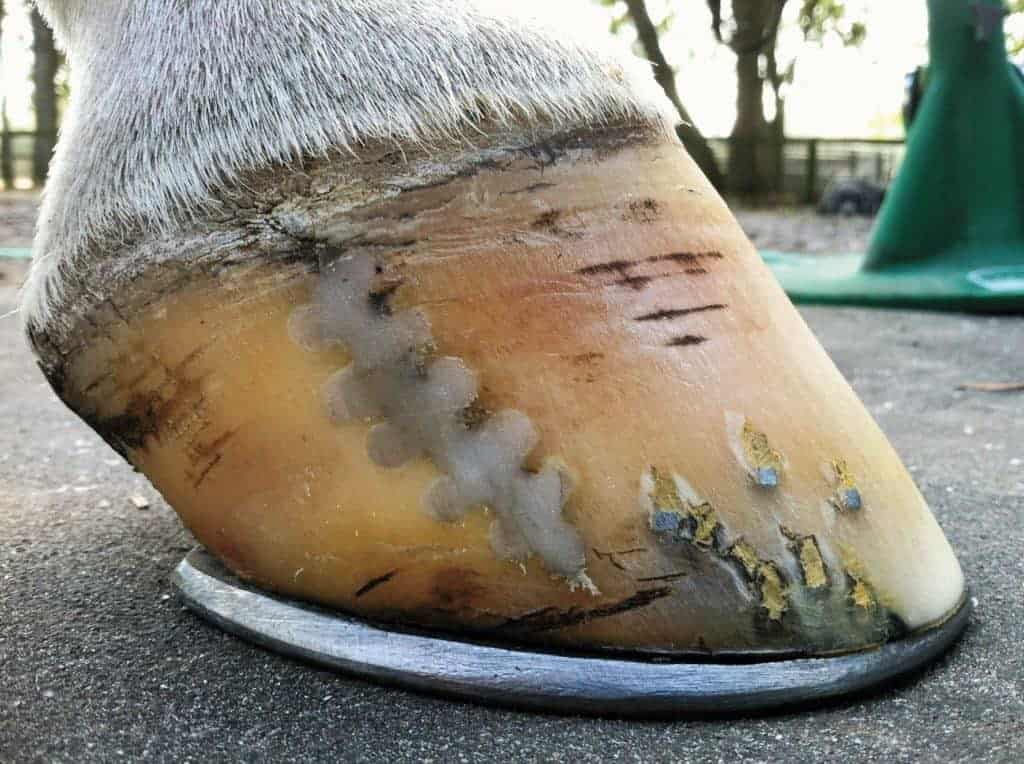
Beneath the Hoof Wall: Soft Tissue Injuries of the Equine Foot
Learn how these injuries happen, how veterinarians treat them, and tips for preventing them in the first place.

Learn how these injuries happen, how veterinarians treat them, and tips for preventing them in the first place.

Veterinarians consider MRI the gold standard for diagnosing equine musculoskeletal injuries. Learn more with this visual guide.

Because the hooves are integral to soundness, veterinarians and farriers should work together to give lame horses the best prognosis.

When used correctly, nerve blocks can help determine the location of discomfort in a horse.

Navicular syndrome, more accurately referred to as podotrochlosis, is a catchall phrase describing chronic forelimb lameness caused by pain stemming from the navicular bone and related structures. Sponsored by Dechra.

Belgian researchers use both modalities to investigate the causes of foot pain in 30 horses referred to the equine hospital for forelimb lameness.

What can an owner do to control a horse’s foot pain? We turned to two equine veterinarians that spend a lot of time managing horses’ feet to find out.

The Horse and Dechra have partnered to educate horse owners about hoof-related lamenesses Feb. 13-19, 2022.

In this visual guide, learn about the vital hoof structures of the navicular apparatus and what can go wrong with them.

MRI has helped veterinarians recognize new pathologies within horses’ hooves as well as learn more about existing lesions.

Any athlete can end up with aches and pains from the rigors of training and performance, and horses are no exception. Sponsored by Arthramid Vet.

Diagnostic imaging technology has improved tremendously in the past few decades, with several effective options to choose from. Learn about the machines and technologies your veterinarian can use to look inside your horse, including MRI, CT, PET scans, and more.

The editors of The Horse: Your Guide To Equine Health Care have scoured our archives and gathered our top lower limb lameness content. Sponsored by Hallmarq Veterinary Imaging.

Lame horse? Advanced diagnostic and management strategies for navicular syndrome have improved long-term outcomes.

Find out what hoof problems you can safely manage yourself and when to call in your farrier and/or veterinarian.

Whether big or small, these hoof wall imperfections require prompt repair and stabilization.
Stay on top of the most recent Horse Health news with
"*" indicates required fields